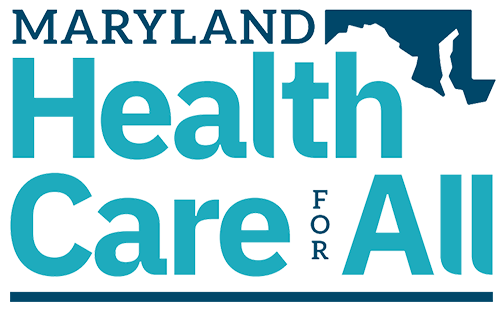Baltimore Sun
August 27, 2017
John Fritze and Meredith Cohn
Christine Sabas had just left her job and was preparing to attend seminary when the symptoms began: Dizziness, burning nerve pain, numbness in her arms and legs.
With the private health insurance she had through work set to expire, the 43-year-old Salisbury woman turned to the Affordable Care Act, qualified for Medicaid and has been undergoing a battery of otherwise unaffordable tests in search of a diagnosis.
Sabas lives in a part of the state that by one measure benefits more from Obamacare than any other: the Eastern Shore. Yet the mostly rural and sporadically impoverished region of Maryland also has been a stronghold of support for Republicans deeply opposed to the law, including President Donald Trump.
An outlier in Democratic Maryland, the nine counties that make up the Eastern Shore supported Trump in last year’s election with 58 percent of the vote. Shore voters also have backed Rep. Andy Harris — an anesthesiologist ardently opposed to the law — with resounding margins.
“This is Trump country,” Sabas said. “But ending the law would be disastrous.”
While the region is decidedly Republican, it also has been affected significantly by Obamacare. Census data show the number of uninsured residents in Maryland’s 1st Congressional District — which includes the Eastern Shore as well as portions of Baltimore and Harford counties — fell from 63,252 in 2013 to 29,193 two years later, a 54 percent decline.
No other congressional district in the state experienced such a big decline.
While efforts in Congress to repeal the law appear to be on hold for now, Sabas and others like her are waiting nervously to see what happens next. Trump has vowed repeatedly to let Obamacare “implode.” He has threatened to halt insurance subsidies widely seen as a linchpin of the system and has pressured congressional leaders to continue work on a repeal effort.
“The only problem I have with Mitch McConnell is that, after hearing Repeal & Replace for 7 years, he failed!” Trump wrote on Twitter late last week in reference to the Senate’s Republican leader. “That should NEVER have happened!”
The impact of Obamacare on the Eastern Shore is unlikely to change its political climate, experts said, in part because the number of people enrolling in health plans under the law remains far smaller than the number of GOP voters. National polling has indicated that President Barack Obama’s signature domestic policy remains unpopular with Republican voters.
Meanwhile, enrollment in Obamacare tells only part of the story. Like many people who bought policies under the law, some on the Eastern Shore have encountered large premium increases.
Shore residents signing up for coverage this fall will have only one company to choose from: CareFirst. That is the same company that has proposed a 52 percent premium increase next year for its most popular plans, on top of a 23.7 percent increase in those plans this year. Most other parts of the state will have two carriers from which to choose.
“I would say pretty much everyone is complaining about the cost of health care,” said Alyssa Sinagra, a licensed insurance broker for 12 years who works for Avery Hall Insurance Group in Salisbury. “I would say that people do not like that they don’t have options.”
Sinagra said some people buying coverage in the Obamacare marketplace, known as Maryland Health Connection, are facing premiums so high they are forced into higher deductible plans.
Harris, who based his campaigns for the 1st Congressional District on promises to repeal Obamacare, notes all of those factors in his criticism of the law.
Harris said he supports continuing subsidies included in the law that offset the cost of premiums for many people, including 83 percent of Eastern Shore residents covered by Obamacare. But he also supports eliminating a separate subsidy that helps people lower out-of-pocket costs. Trump has repeatedly threatened to end the latter subsidy, even as his administration has continued to pay it.
Eliminating the cost-sharing subsidies would cause insurance premiums to grow 20 percent, according to the non-partisan Congressional Budget Office. Harris dismissed the CBO’s estimates.
“The insurance companies are using this as just another excuse to raise premiums,” he said.
“Money from the federal government isn’t free money,” Harris said. “Given that we’re running a $700 billion deficit, a good compromise is that we will subsidize the insurance premiums but we’re not going to subsidize co-pays and deductibles.”
The Affordable Care Act, approved in 2010 with only Democratic support, allows states to opt into an expanded Medicaid program that raised the income cap for eligibility. Maryland and 31 other states and the District of Columbia embraced the idea. The cost of those new beneficiaries was initially borne entirely by the federal government, though states are expected to pick up 10 percent of the cost beginning in 2020.
Harris said Maryland was successfully helping patients prior to Obamacare through a high-risk pool initiative known as the Maryland Health Insurance Program. While that effort faced challenges, too, it was widely viewed as successful by independent analysts.
Regarding Medicaid, Harris predicted that Maryland officials would find the money to backfill federal funding cuts from the state treasury.
That sentiment puts him at odds with Gov. Larry Hogan, a fellow Republican who would have to find $1.27 billion to cover the 274,159 Marylanders who became eligible for Medicaid under Obamacare. Hogan, arguably the state’s most popular politician, has become increasingly critical of his party’s repeal efforts.
In raw numbers, most of Maryland’s Obamacare enrollees come from the state’s population centers, not the Eastern Shore. Montgomery and Prince George’s counties along with Baltimore City account for nearly half of all participants. The Eastern Shore has 41,000 people who signed up for coverage on the Obamacare exchange — about 8 percent of statewide enrollment.
But by another metric — the share of uninsured residents — the law has affected the Eastern Shore more than any other part of the state. The share of residents without coverage in the 1st District fell from nearly 9 percent in 2013 to just over 4 percent two years later — the largest drop in the state. By comparison, the share of uninsured statewide fell from 10.2 percent to 6.6 percent over that period.
The numbers on the Eastern Shore reflect a national trend in rural communities nationwide, many of which turned out in force for Trump’s election last year. The share of uninsured adults in states that embraced expanded Medicaid fell 11 percentage points in rural areas compared with 9 points in metropolitan areas between 2008 and 2015, according to a study published in June by the Center for Children and Families at Georgetown University.
Such reductions in the uninsured, driven largely by new Medicaid beneficiaries, explain why Republicans from rural states such as Maine’s Susan Collins and Alaska’s Lisa Murkowski opposed Obamacare repeal efforts. Along with Republican Sen. John McCain of Arizona, the lawmakers ultimately killed a repeal bill in a dramatic late-night vote last month.
The health care law has had a big impact in rural areas like the Eastern Shore in part because poverty is widespread and, unlike in cities, is not as well balanced with pockets of high wealth, said Jack Hoadley, a Georgetown research professor. Another factor is the type of jobs people are more likely to perform in rural America.
“If you’re working for a farm, or a hardware supply store, those are employers that are less likely to offer coverage,” he said.
Joana Weaver, a 49-year-old Salisbury woman who has cerebral palsy, said the Medicaid expansion enabled her to afford care and — even more important — to continue her work teaching English as a second language. Weaver said she made too much money to qualify for the core Medicaid program, but still struggled to afford regular doctor appointments and medication before Obamacare expanded the program.
“Everybody recognizes that we need to fix this and I agree it’s not the best plan in the world, but to take it away from people who need it is not good either,” Weaver said.
Rural areas have been of special concern for state insurance regulators for years, said Tracy Imm, a spokeswoman for Maryland Insurance Commissioner Al Redmer Jr.
“We are concerned not only about price but access and options,” Imm said. “We’re looking at all the different options and how things may play out at the federal level, so we can decide what to do at the state level.”
Despite a raucous town hall meeting in March in which Harris was repeatedly booed for his position on health care, there is little indication the congressman is in political peril. Trump won the nine counties on the Eastern Shore with nearly 124,000 votes last year — about three times the number of people who gained coverage under Obamacare.
Harris won re-election in 2016 with a 123,582-vote margin, capturing 67 percent of the electorate.
“There’s really no indication of a progressive or moderate movement taking place,” said Todd Eberly, a political scientist at St. Mary’s College of Maryland.
“It’s pretty easy to support in the abstract this idea that you have to repeal and replace the Affordable Care Act,” he said. “Most people do say that they oppose government programs and government spending but they never seem to associate benefits [for] themselves with the ‘bad’ stuff.”
For Charles Birckhead, a 58-year-old Cambridge man, there’s little abstract about the debate. Diagnosed with bladder cancer three years ago and forced out of work while he recovered, Birckhead said the Medicaid expansion included in the Affordable Care Act saved his life.
He’s had one recurrence of the cancer since his initial treatment, and also faced prostrate cancer. All of his medical work has been covered by Medicaid.
“Obamacare sustained us, I guess you could say,” Birckhead said. “I don’t know what people are going to do if they lose their coverage. You’re just going to have a lot more sick people who are going to be hopeless.”




